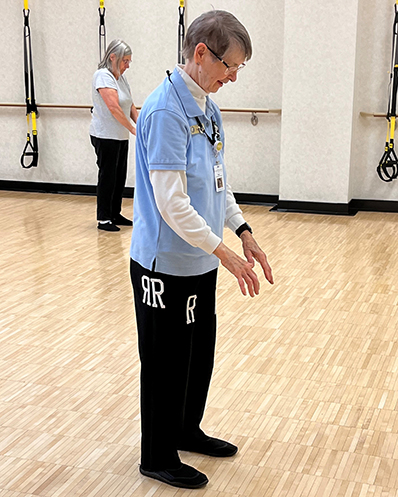Workout Your Brain and Body with Tai Chi
- Category: News, Wellspring
- Posted On:
A slow-moving variation of a Chinese combat technique from centuries ago, is now practiced by people of all ages as a low-impact, meditative style exercise with many health benefits, including a reduced risk of falls.
Tai chi (or t’ai chi ch’uan) is a, gentle exercise routine that uses slow, continuous movements. This fun and interesting exercise has been described as “meditation in motion” and consists of fluid, precisely controlled movements in specific sequences called “forms” that are put into routines.
The core tai chi principles are movement control, body structure, and internal calm control. It can be done free-standing, or you can hold onto a chair back or sit if you have stability concerns.
Mental and Physical Benefits of Tai Chi
Tai chi differs from other types of exercise in several respects – movements are unforced, joints are not fully extended or bent, and connective tissues are not stretched. As you move, you breathe deeply and naturally, focusing your attention on bodily sensations.
Tai chi has several health benefits; it improves balance, reduces falls, builds strength and flexibility, improves mental wellbeing, and relieves pain.
Since 2010, more than 50 systematic reviews have documented tai chi’s value for elderly people at risk for falling. The evidence suggests tai chi is an efficient, cost-effective way to improve static and dynamic balance, reduce fear of falling, and potentially decrease the prevalence of falls in elderly people.
Tai chi can also improve cognition in older adults. This includes language, learning, memory, and executive function (an umbrella term for range of cognitive processes, including attention, working memory, problem-solving, processing speed, mental flexibility, and other tasks). Although it is difficult to pin down exactly how tai chi improves cognition, it appears that practicing the movements can significantly enhance global and executive functioning in people with either no impairment or mild cognitive impairment and may protect against cognitive decline that comes with aging.
Tai Chi Classes at Wellspring
 Taking a tai chi class has advantages over learning it from a video. The instructor can offer feedback to improve your form and camaraderie develops with other classmates.
Taking a tai chi class has advantages over learning it from a video. The instructor can offer feedback to improve your form and camaraderie develops with other classmates.
Peg Faludi has been teaching Wellspring’s tai chi classes since 2016. She received her training through the Tai Chi for Health Institute and is certified to teach four different tai chi routines. She has taken nine in-person and Zoom continuing education classes and attends monthly Zoom forums for instructors.
Find an upcoming tai chi class at Wellspring.
Image: It is very important that people practicing tai chi know left from right when doing the movements. Peg decorated her pants with the letter “R” on the right leg and “L” on left leg to make it easier for class participants to see which direction to move.
